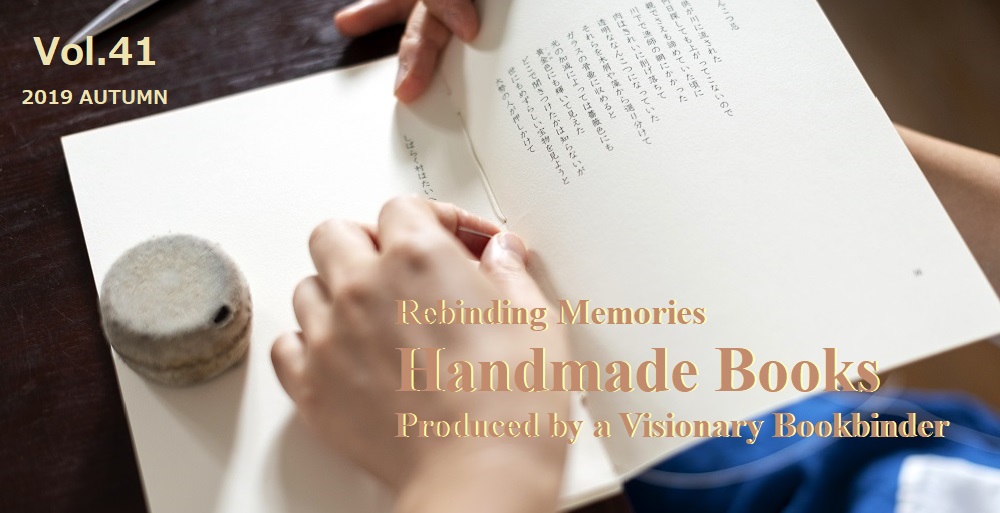
━━━━━━━━━━━━━━━━━━━━━━━━━━━━━━━━━━━━━━━━━━━━━━━━━━━━━━━━━━━━━━━━━━━━━━━━━
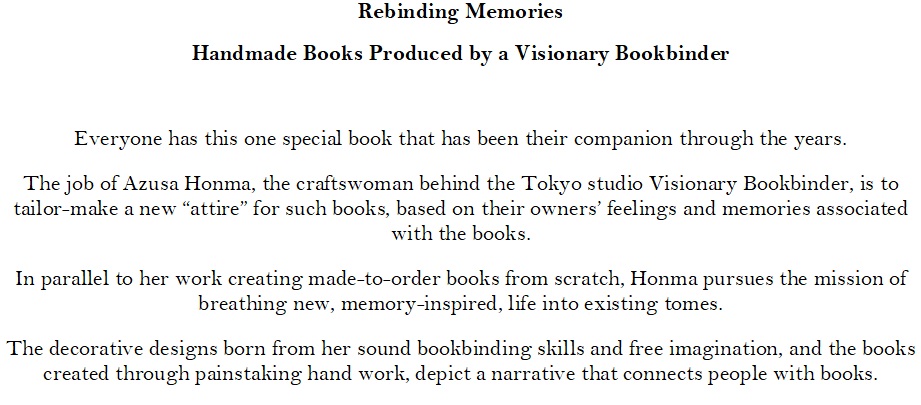
━━━━━━━━━━━━━━━━━━━━━━━━━━━━━━━━━━━━━━━━━━━━━━━━━━━━━━━━━━━━━━━━━━━━━━━━━
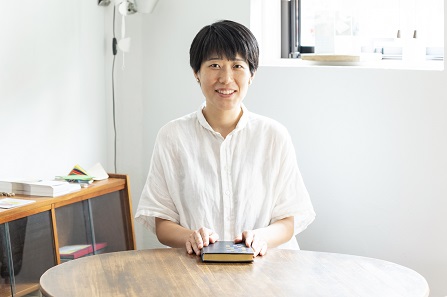

Born in 1983 in Kasama City, Ibaraki Prefecture. In 2005, Honma, who was then enrolled in the Tokyo University of Foreign Studies, began studying the art of manual bookbinding at a studio in Tokyo. In 2010, she established Visionary Bookbinder, embarking on a career of an independent bookbinder. Honma returned to school to study bookbinding at an institute for advanced education in Ascona, Switzerland.
Today, she is engaged in a broad range of activities, including creation of limited editions of made-to-order books, bookbinding classes, and workshops. Honma is also the chief editor of Mononome Press, a publication on manual bookbinding, and is actively involved in its planning, production, and publishing.

Visionary Bookbinder, which operates from an atelier in Koganei City, Tokyo, is a bookbinding studio that creates made-to-order books using manual binding techniques.
“I handle the full-range of operations, from the selection of the paper to the binding of the book. Many of my clients publish their works—collections of poems, waka, or photo books—at their own expense,” explains the owner of the studio, Azusa Honma.
We witnessed her work as she painstakingly engaged in performing and then checking each of the dozens of elaborate and delicate manual operations that compose the process of binding a book.
“The printed sheets of paper are folded and then basically sewn through the fold using a hemp thread, but because the fluff of the thread can get loose and tangled, I apply beeswax to it. I also fine-tune the thickness of the thread depending on the structure of the book, the number of pages, and the format.”
After creating the spine of the book using a needle and a hemp thread, the binder proceeds to “harden” the spine with adhesive. Next, she “rounds the spine” to make the book easier to open, and then attaches cheesecloth (a type of open-mesh cloth) and top and bottom endbands for structural reinforcement and decorative effect.
“If I am using leather for the book cover, I lightly trim the top and bottom, as well as the external edges with a leather cutting knife that I move outwards to create a smooth inclination. Books with a slightly bulging core fit better in the hands of the reader.”
In her work, Honma is uncompromising with regard not only to the durability and beauty of the book, but also to the way it feels in the hand, and this attitude testifies to her earnest approach to the art of creating books.
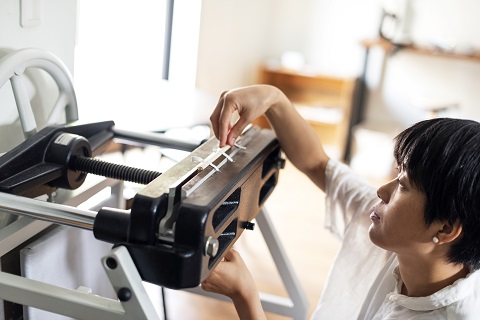

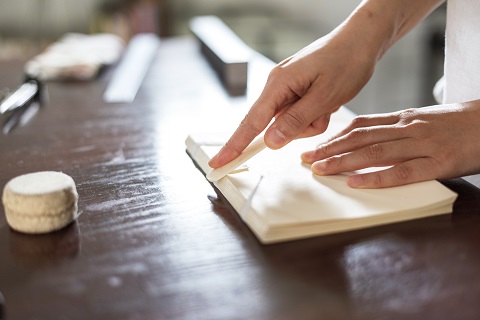
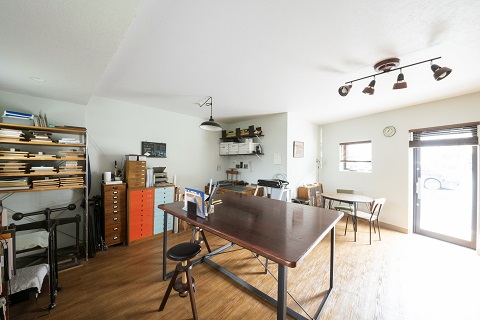
Parallel to creating custom-made hand-bound books, Visionary Bookbinder also engages in efforts to restore old books in a manner that reflects the memories and feelings of the clients. Honma is entrusted with books treasured by their owners, and she proceeds to take them apart, re-sew the pages together, restore damaged sections, and finally decorate the cover, thus clothing the old books in an entirely new outfit.
“My work on a book begins with asking the client questions about their encounter with that book and what they like about it, as well as memorable episodes related to it, etc. I come up with ideas about the design, binding method, materials for the cover, and all other restoration aspects based on the client’s thoughts and feelings about that book, so no two books that I make are alike, even if their content is identical, because they are tailor-made to match their different owners.”
For instance, if it is a book filled with handwritten notes that the client has inherited from a respected mentor, the design of the cover will encompass the client’s image of that mentor, and the structure of the cover will be specially reinforced to ensure that the client can continue to use the book for many years to come.
Honma envisions the narrative that connects a book and its owner as she engages in the painstaking manual work of recreating this narrative in a tangible format. This job is truly deserving of the name “Visionary Bookbinder.”
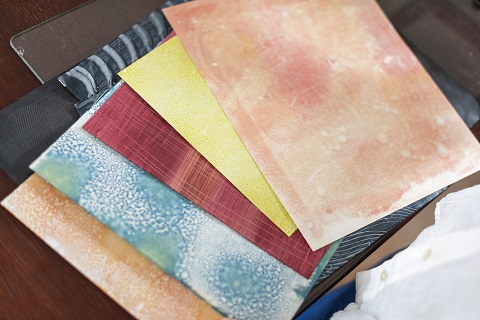
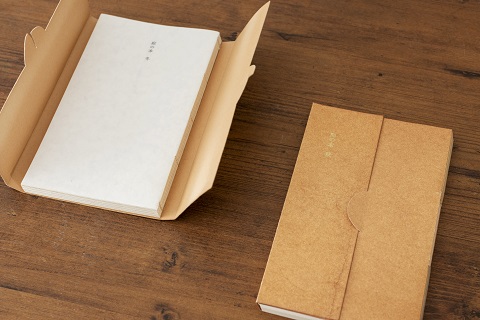
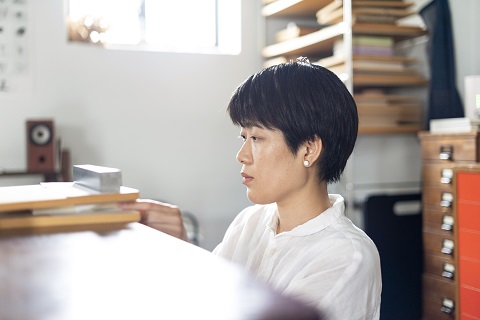
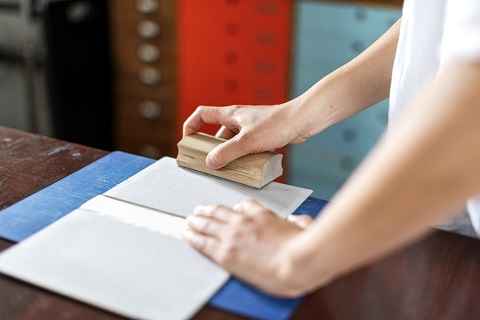
Azusa Honma decided to become a bookbinder when she was in university. Her resolution to study bookbinding was inspired by a book on manual bookbinding written by Kumiko Tochiori, who studied the craft in Belgium and introduced it to Japan, and the experience of seeing handbound books at an exhibition.
“When I saw the actual works, I felt as if the books were calling out to me, as if they were living beings. I was drawn by the mysterious appeal that is missing from machine-made books. I saw the craft of bookbinding as filled with opportunities for free creation inspired by one’s own ideas, and a sense of delight derived from giving a physical structure to an intangible story, so I decided to make it my future profession.”
Honma studied at a bookbinding studio in parallel to her academic pursuits, and learned a broad range of binding techniques. After graduation, she found a job in the field of editing, but continued to study at the bookbinding studio, and held solo exhibitions at a pace of one a year. People who saw her works began employing her services to create handmade books. “Three years after joining the editing company, I quit and enrolled in a Swiss bookbinding school with the goal of expanding my expertise and vision regarding bookbinding. The knowledge I gained there on a broad range of technologies, from classic European techniques to new methods, became an important asset for me.”
After returning to Japan, Azusa Honma embarked on a career in the field of book renovation and manual book binding. In addition to creating made-to-order books for self-publishing authors, she is also engaged in activities to spread the appeal of hand-made books through bookbinding classes and workshops. Last October, she moved her atelier to a downtown area with the goal of interacting with a larger audience. “In Europe, bookbinding studios are located in busy downtown areas, so people can easily drop by to have their books repaired or bound in a manner of their liking. I hope that my atelier becomes a place where people can freely contemplate the format of their books and experience the joy of bookmaking.”
According to Honma, the appeal of books lies also in their physical aspects: the weight in the hand, and the way they feel to the touch. We hope that Visionary Bookbinder will continue to be a place that connects people with books.
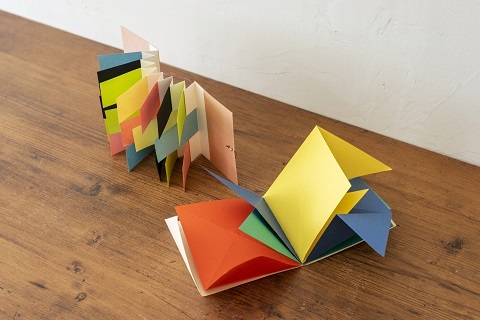
These paper-play books can be freely transformed in the manner of shape-changing origami paper, and are often used in workshops for children.
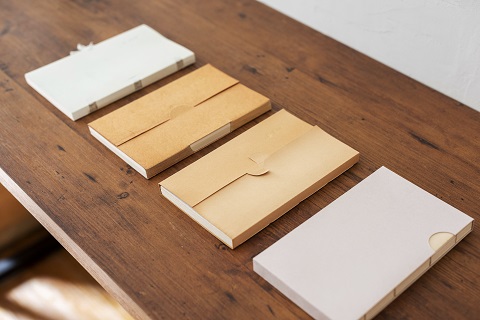
Niwa no Hon (“Garden Book”), a self-published limited-edition publication that is planned, produced, and issued by Azusa Honma. The cover and the threads used in the binding are dyed with seasonal plants, and each volume is handmade. The sewing method and the binding differ depending on the season, and each issue contains waka, haiku, and Western-style poetry that depict the highlights of the respective season.
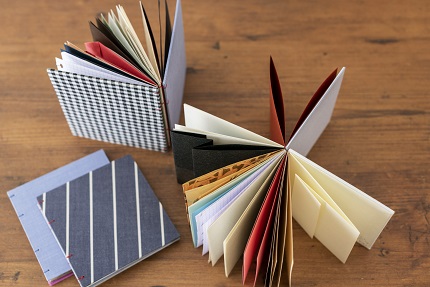
Notebooks made by binding together leftover paper sheets used in their original format. The notebooks can open really well. Cloth scraps from shirts are used for the covers. The artist named these works “Odds-and-ends notebooks.”
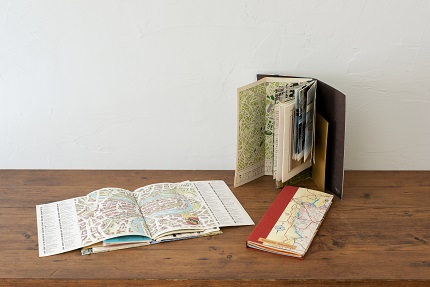
A collection of pamphlets and old maps of Europe acquired at antique shops, sewn together into a single volume that compiles Honma’s memories from her journeys. Even large maps can be spread properly.
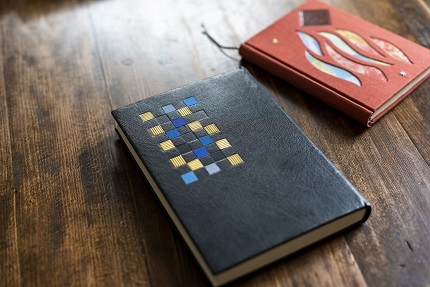
Original works made by Azusa Honma. The black leather cover, which Honma created during her studies in Switzerland, combines a brass plate with silk.
━━━━━━━━━━━━━━━━━━━━━━━━━━━━━━━━━━━━━━━━━━━━━━━━━━━━━━━━━━━━━━━━━━━━━━━━━
